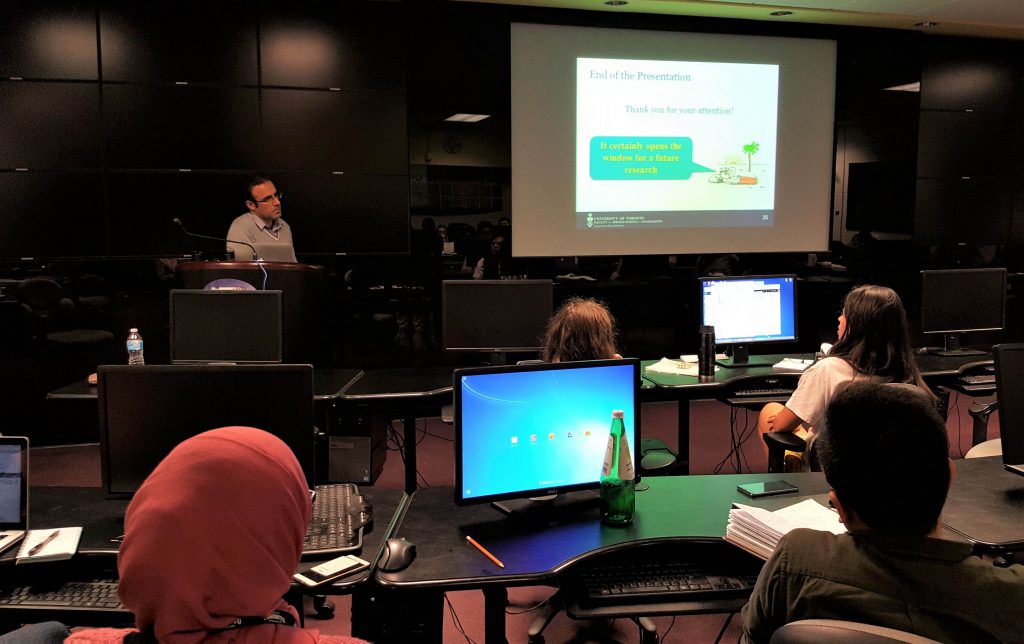
Dr. Mahmood M. Nesheli’s October 13 presentation, “Real-time Control Strategies for Public-Transport Transfer Synchronization,” discussed the issue of passenger transfers in a public transit context. The development of a model was presented; it included the concepts of “library of tactics” and “direct transfer.” The model was applied to a limited number of routes in Auckland, New Zealand.
Among several findings regarding high frequency routes, Dr. Nesheli recommended that a “holding and boarding-limit” policy should be adopted.
To end the presentation, a video was shown demonstrating a futuristic concept of train-to-train passenger transfer – while both trains are still in motion.
Dr. Nesheli kindly shares his presentation PDF here.
Abstract
Handling efficiently and effectively real-time vehicle control is a major concern of public transport (PT) operators. One related problem is how to reduce the uncertainty of simultaneous arrivals of two or more vehicles at a transfer point. Improper or lack of certain control actions lead to missed transfers, one of the undesirable features of the PT service. Missed transfers result in increases in passenger waiting and travel times, and passenger frustration.
This work focuses on reducing the uncertainty of missed transfers by the use of control tactics in real-time operation. The developed model improves the PT service performance by optimally increasing the number of direct transfers and reducing the total passenger travel time.
The implementation of the concept is performed in two steps: optimization and simulation. The optimization searches for the best combination of operational tactics. The simulation serves as a validation of the optimal results under a stochastic framework.
A case in Auckland, New Zealand is used.
Short Bio
 Dr. Mahmood M. Nesheli is a Postdoctoral Fellow of Transportation Engineering and Planning at the University of Toronto Transportation Research Institute with a thorough research background as well as professional experiences in the areas of Public Transport Planning and Operation, Intelligent Transportation Systems, Operation Research, and Multi-modal Transport System. Mahmood is working on the Trapeze project under the supervision of Professor Amer Shalaby.
Dr. Mahmood M. Nesheli is a Postdoctoral Fellow of Transportation Engineering and Planning at the University of Toronto Transportation Research Institute with a thorough research background as well as professional experiences in the areas of Public Transport Planning and Operation, Intelligent Transportation Systems, Operation Research, and Multi-modal Transport System. Mahmood is working on the Trapeze project under the supervision of Professor Amer Shalaby.
Mahmood received a PhD in Transportation Engineering from the Department of Civil and Environmental Engineering, University of Auckland, New Zealand in 2016. He did his PhD under the supervision of Professor Avi Ceder, focusing on Public Transit system.
Mahmood has gained several industry experiences and worked at consulting companies and in the governmental sector. Before joining the University of Toronto, he was the Senior Public Transport Analyst at Auckland Transport, New Zealand.
This seminar was presented by the University of Toronto Institute of Transportation Engineers (ITE) Student Chapter.
